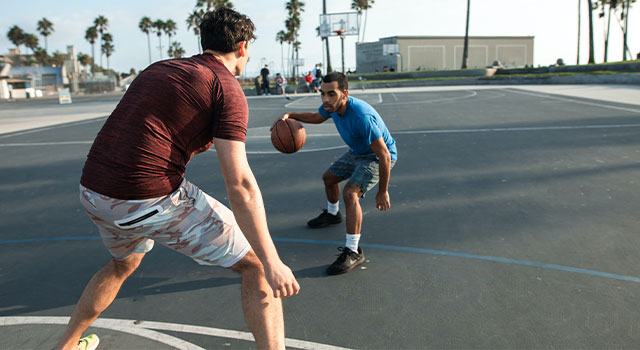 Between 1.7 million to 3 million sports and recreation-related concussions occur each year in the United States alone. 70-80% percent of those surveyed have vision issues.
Between 1.7 million to 3 million sports and recreation-related concussions occur each year in the United States alone. 70-80% percent of those surveyed have vision issues.
So what can you do to avoid a concussion? Consider sports vision training. It can help you perform better and protect your head and brain from injury.
Sports Vision Training and Sport-Related Head Injuries
Concussions are among the most prevalent injuries sustained in sports.
When your visual abilities aren't up to par, you may underestimate the distance between yourself and the ball or between yourself and other players. Due to limited peripheral vision, miscalculating the velocity of a ball or the location of competing players may result in significant head or other injuries.
This is why, like exercising your muscles, it's important to train your eyes to communicate more efficiently with your brain and body.
Sports Vision Exercises to Prevent Concussions
If you're looking to improve your game by improving your visual skills, visit today. Dr. Joshua Watt will prescribe a sports vision training program based on your sport and the visual abilities you need to develop.
Until then, here are some very basic exercises you can do at home. (Keep in mind that there is no alternative for a specialized sports vision assessment and training tailored to your individual visual strengths and deficiencies.)
Depth Perception
Depth perception is crucial for a variety of sports. Baseball players require it to hit the ball as it crosses the plate, while football players need it to judge where the ball will land. Even swimmers use depth perception when doing a flip-turn near the pool's edge during a race.
You can practice this skill by holding a drinking straw at arm's length and trying to drop a tiny pebble or balled-up piece of paper through the straw with your free hand.
Peripheral Awareness
Peripheral awareness is crucial for succeeding in sports, as athletes must be able to sense the world around them without turning their heads. By honing this visual skill, they can drastically improve their game.
One thing you can do to improve peripheral awareness is to stand at a junction and look straight ahead at the road in front of you. Practice seeing cars pass horizontally from left to right without moving your head—simply perceive them through the edges of your visual field.
Focus Flexibility
The ability to shift your concentration from far away to nearby objects is referred to as focus flexibility.
Focus on an object close to you, then adjust your focus to an object behind the first one in the same line of sight to improve your focus flexibility. A bowl on a table in front of you, for example, and then a painting on the wall in the distance.
Switch between focusing on the bowl and the painting. This is also a good exercise for those who spend a lot of time at their computers. It will not only improve your focus flexibility but will also ease eye strain caused by prolonged screen use.
If you're looking to improve sports performance, contact today. Sports vision training will help you up your game whether you're a competitive athlete or simply enjoy playing on the weekends.
Q: What is Sports Vision Training?
- A: Sports vision training is a customized program that uses a series of techniques and exercises to teach your brain and body to respond more accurately and efficiently to a fastball or hockey puck rapidly coming toward you. The training focuses on improving visual skills, such as hand-eye coordination, eye tracking, depth perception, focusing and peripheral vision.
Q: Can sports vision training lead to a decrease in sport-related injuries?
- A: According to a study done by the University of Cincinnati Division of Sports Medicine, football players who had undergone sports vision training to improve their peripheral vision had fewer concussions than those who did not do it.
- This is because sports vision training helps the eyes and brain react more quickly to changes in the environment, resulting in more successes and fewer accidents.
- Impact Vision Therapy serves patients from Pueblo, Colorado Springs, Castle Pines, and Parker, Colorado and surrounding communities.
